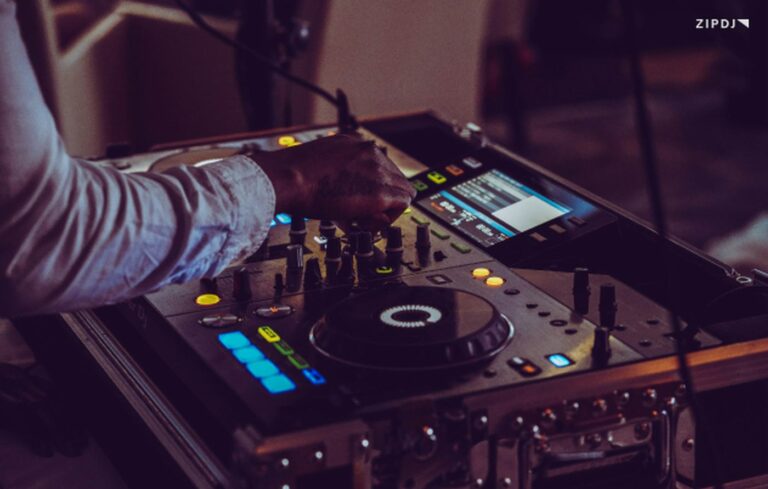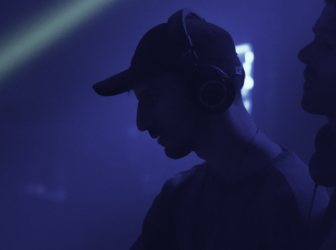Top 10 Mixing Techniques to Master In 2025

With thousands of DJs competing for the best gigs, mastering a range of mixing techniques is crucial if you want to stand out from the crowd.
These techniques range from understanding how to use samples and vocals to mastering your DJ controller with performance pad live sets.
To help you get started, we’ve compiled this overview of the essential mixing techniques you need to master to enhance your career.

Top 10 Mixing Techniques To Master In 2025
Whether you’re a professional radio DJ or an enthusiastic hobbyist, learning new ways to mix tracks will help keep your DJ sets fresh.
We’ve ensured this guide covers a broad selection of mixing skills that all types of DJs can use to create dynamic transitions in their sets.
So, with our criteria established, here are the top mixing techniques you need to master in 2025:
10. Tone Play Mixing
Whether you’re working on mastering life as a home DJ or working as a professional, developing new techniques is essential to keep things fresh.
Once you’ve learned how to perform basic beat matching and transitions, there are dozens of advanced mixing techniques to try.
Our first pick for this list is tone play mixing, which explores the melody and dynamic range of tracks when mixing music.
The basic principle of tone play mixing requires a good ear for the key and pitch of individual tracks so you understand how they can be matched.
DJs isolate the melody from one track and pair this with the notes and sounds of the incoming track before blending them in a transition.
This technique is a great way to mix music that features prominent instruments and vocals and is not dissimilar to harmonic or key mixing techniques.
However, by using pitch-shifting software and other advanced AI-powered tools, the scope for compatible tracks is endless.
Tracks that might otherwise sound unnatural can be manipulated and enhanced with creative effects and dropped into the finished mix.
Tone play mixing techniques have great scope for experimentation, with some of the best old-school DJs using it to great effect in their sets.
9. Instrumental & Acapella Mixing
A similar mixing technique to tone play mixing is mixing with acapella and instrument tracks in combination with original cuts.
It’s a technique that can be easily performed on beginner DJ equipment and simply requires access to the appropriate instrument and acapella edits.
Such edits are widely available on platforms such as DJ pools, which offer dedicated edits ready to use when mixing in this style.
As with tone play mixing techniques, a grasp of harmonics is important to avoid playing transitions that sound strange to the audience.
Fortunately, the best DJ software automatically presents information on beats per minute and key to help line up compatible tunes.
Once you’ve built up a library of acapella and instrumental edits, you can incorporate all the sounds from these into your live sets.
Not all acapella and instruments work well with other sounds, so it pays to experiment until you’re sure which ones are going to sound good.
While this technique is great for adding flourishes to transitions, avoid using it throughout an entire mix and detracting from the percussion.
8. Tempo Change Transitions
Understanding tempo is one of the fundamental aspects of learning how to make a DJ mix, ensuring consistent sound quality throughout.
Once you’ve mastered this core technique, you can play around with the concept by bending the rules with tempo change transitions.
As the name implies, this technique involves switching up the tempo of the incoming track so it’s different from the outgoing tracks.
This can be introducing faster tracks into the mix, building up tempo over time, and heightening the sense of urgency and energy.
Alternatively, it can be used to slow down the tempo, with a lower BPM than the first track, to give the crowd a little breathing space.
Typically, tempo change transitions change the BPM by a large amount to deliver a stronger impression within the DJ set.
They can help with genre fusion transitions, for instance, moving from 120 BPM house music to 150 BPM tough techno tracks.
Combined with instrument and acapella transitions, they can help avoid otherwise clunky and discordant mixes that fail to land.
7. Rapid-Fire Mixing
Another effective transition for mixing a variety of genres is the rapid-fire mixing technique, which allows DJs to jump between two tracks.
This technique isn’t limited to any particular genre and can be found everywhere, from wedding DJs to hardened club DJ veterans.
Like other advanced DJ techniques, rapid-fire mixing takes some practice to master, as well as a good ear for cross-genre music compatibility.
The process involves playing each track for a short period before quickly transitioning and bringing the next track into the mix.
Some great examples of how this technique can be used to great effect can be found in the techno mixes released by Fabric Live.
Here, the DJ will play between one and two minutes of a given track before cutting to the next one to create an aural collage effect.
Electro-house music is another popular genre for using the rapid-fire mixing process and avoiding the standard practice of using intros and breakdowns.
It’s also widely used by hip-hop scratch DJs as part of the beat-juggling process, which we’ll explore in more detail later in this article.
6. Sample-Based Mixing
The use of samples has been an integral part of the music production process for several decades, expanding the recording process.
Indeed, many producers swear by samples, allowing them to apply a range of effects to help make them unique and refreshing.
The different techniques used by producers when audio mixing can be applied to DJing to create rich and dynamic DJ mixes.
DJs, including DJ Shadow, Pete Rock, and DJ Premier, have demonstrated just how well samples can be integrated into DJ sets and transitions.
Many of the best DJ controllers have assignable pads that can be used to line up several samples at once to use throughout a mix.
These samples can then be triggered at any point in the mix, from introducing new drum loops to vocal snippets and unique sound effects.
DJs can then manipulate these samples in real time to add reverb or apply a high pass filter and take the mixing process in new directions.
If you’re looking for a new and exciting way to improve your DJ skills, playing with samples will help you approach mixing with fresh ears.

5. Multi-Genre Mixing
We’ve touched briefly on the concept of multi-genre mixing when discussing rapid-fire and tempo change transition techniques.
It’s something that anyone learning how to become a radio DJ will be familiar with, particularly if they’re hosting a commercial show.
Radio DJs often play music that hasn’t been designed for the mixing process, with genres such as pop, rock, and classical as great examples of this.
As such, multi-genre mixing takes a different approach to the techniques that reflect the absence of useful intros and breakdowns.
One way DJs accomplish this is by creating BPM crates and playlists which place all tracks of a given tempo into one location.
Such playlists are open to all types of music, making it much easier to do quick key or instrument mixes regardless of style.
It’s a common process used by mobile and wedding DJs who need to drop tracks into the mix on the fly based on audience requests.
4. Wordplay Mixing
Wordplay mixing is a technique that on the surface resembles acapella mixing, and the two do share a couple of traits in common.
But while wordplay mixing does require the DJ to match the key of both audio tracks, it takes things to another level by paying attention to lyrics.
The most common application for wordplay mixing can be found in hip-hop, which uses wordplay when selecting vocals to use for scratching.
By breaking down the lyrics of the tracks being mixed, the DJ can have fun bouncing words between tracks during a transition.
Popular online streaming platforms such as Spotify feature tools that present the lyrics of a given track to help DJs find appropriate music.
Other online resources dedicated to song lyrics can also be used to compile playlists of relevant music ready for wordplay mixing.
There are lots of handy resources online to help you master wordplay mixing, and the best DJ tutorials will break down the techniques in detail.
3. Beat Juggling
Learning how to DJ with vinyl is a great way to experience a more tactile approach to DJing with a hands-on sense of timing.
It’s been a staple approach to the art form since DJing began and remains hugely popular among DJs who want access to an archive of records.
One of the most popular DJing techniques with vinyl is beat juggling, which bears a resemblance to the aforementioned sample mixing.
Beat juggling requires the DJ to isolate two or more samples, and then use these to create a unique composition by jumping between them.
Vocal phrases and drums are often used for beat juggling, although bass tracks and other elements can also be used to great effect.
Once the first sample or phrase has played on one record, the DJ quickly moves to the second track’s sample by using the crossfader.
Then, while this second sample is playing, they spin the initial track back to the starting position and then transition back with the fader.
While the technique is usually associated with vinyl DJs in the hip-hop world, it’s not necessarily limited to this style and genre.
Indeed, many DJ controllers can be used to perform beat juggling, whether using CDJs or contemporary digital audio files.
2. Performance Pad Live Sets
Understanding audio mixing techniques and the music production process isn’t a requirement for being a great DJ, but it certainly helps.
If you’re learning how to become a DJ producer and want to use this knowledge to improve your sets, performance pad live sets are essential.
Some DJ controllers feature performance pads as standard, while Ableton Live controllers are dedicated to this process.
This can be as simple as using samples, as we’ve explored earlier, or bringing more adventurous elements to the DJing experience.
DJs such as Derrick Carter and Frankie Knuckles pioneered the use of drum machines combined with vinyl mixing in their sets.
With performance pads, drums, and other loops can be quickly triggered and looped and blur the line between DJing and production.
If you know how to play the piano, you can combine performance pad live sets with MIDI keyboards and introduce live chords and melodies.
The result is potentially groundbreaking sets combining creative effects and loops that complement your choice of music.
1. Multi-Deck Mixing
Our final pick for essential DJ mixing techniques you can add to your repertoire is multi-deck mixing and combining several tracks at once.
This technique, developed by some of the best techno DJs over several decades, is particularly effective when creating long transitions.
One way to achieve this is to select tracks for your sets that feature long intros and outros that offer plenty of breathing room for mixing.
Alternatively, DJs can create the same sense of space by carefully using the loop function on their controller to draw out specific tracks.
On the other hand, tracks with complex melodies and vocals are harder to integrate into multi-deck mixing since they can create more conflicts.
It also requires tight and precise EQing and avoiding having too many sounds playing at once since this can also become messy.
These pitfalls can be largely avoided by learning your tracks by heart and understanding which portions work and which don’t.
Judicious use of sound effects such as delays and reverb can also help with creating multi-deck mixes that sound impressive.
With Pioneer’s OPUS QUAD DJ controller revolutionizing the potential for multi-deck sets, it’s a great time to begin learning this technique.
Summary
Learning how to master more advanced DJing techniques is essential for making a mark, and this guide will give you plenty of room to develop.
While some of these techniques cater to club DJs, others can be handy for mobile and wedding DJs looking for tighter transition methods.
Once you begin mastering one new technique, you can try combining it with other methods to further expand your live DJ sets.
Build impressive playlists with a ZIPDJ subscription to use when learning these excellent DJing techniques.
Not a member ?
Join Today for Unlimited Music Downloads. Visit zipdj.com for more information.



